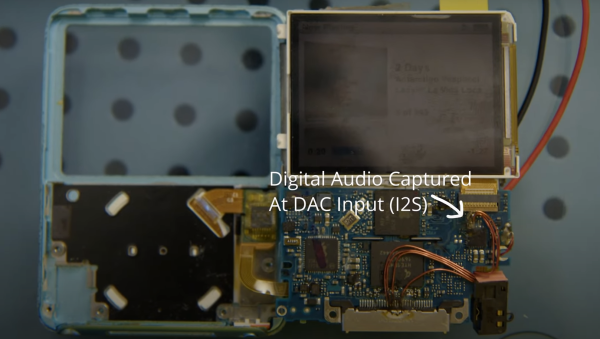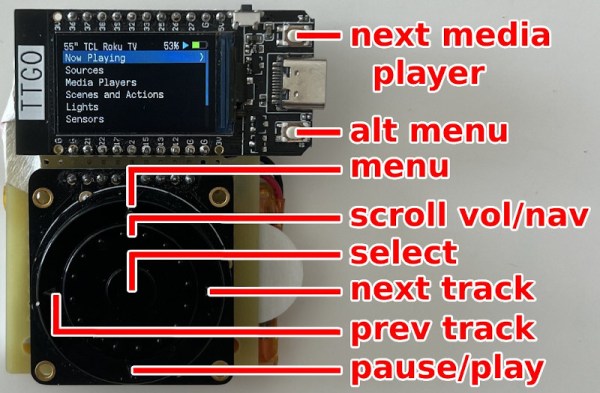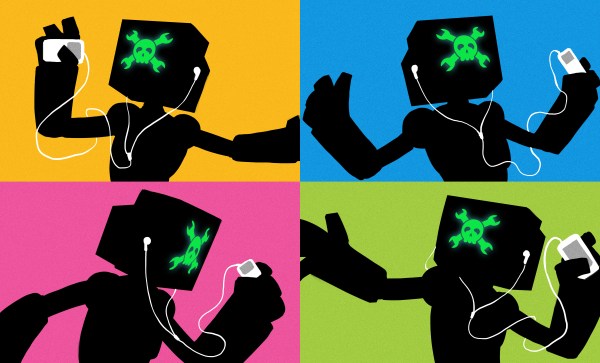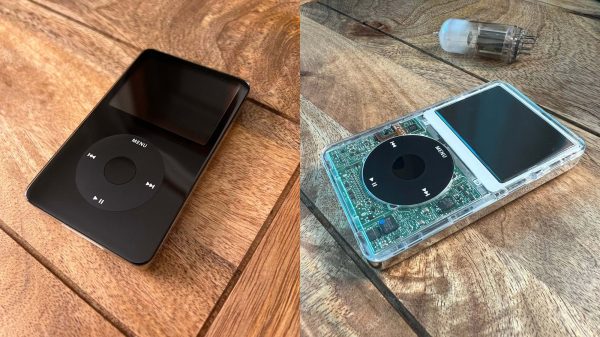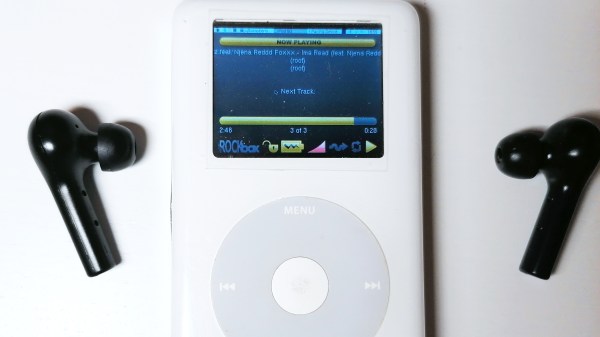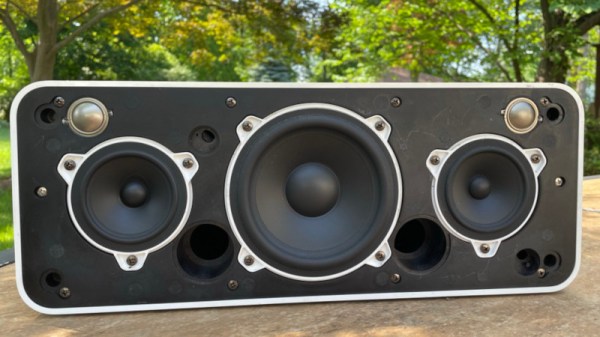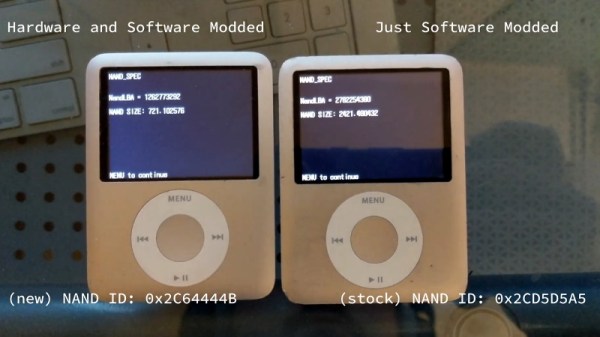The iPod Nano was one of Apple’s masterworks, but it’s really tied down by its dependence on wired headphones. At least, that’s what [Tucker Osman] must have thought, as he spent an unreasonable amount of time designing a Bluetooth mod for the 3rd gen Nano. And it’s a thing of beauty — temperamental, brutally difficult to build, and fragile in use, but still beautiful. And while some purists try to keep their signal analog, [Tucker]’s coup d’etat is to intercept the iPod’s audio signal before the DAC chip, keeping the entire signal path digital to the Bluetooth speaker. Oh, and he also managed to make the volume and track skip buttons work, back across the wireless void.
ipod98 Articles
Scroll Through ESPHome With IPod-style Click Wheel
While you’d be hard pressed to find a Hackaday writer that feels any nostalgia for the DRM nonsense the iPod helped to introduce, we’ve got to admit that we miss that click wheel. Spinning your way through long lists was a breeze, and the tactile response made it easy to stop exactly where you wanted. These days, we’re stuck fumbling our way through touch screen interfaces that make simple tasks like seeking to a particular spot in a song or video all but impossible to do with any kind of accuracy.
If you too yearn to once again feel that subtle thumping under your thumb, then check out this project from [landonr]. Technically the handheld gadget is intended to be used as a wireless remote for a home automation system powered by ESPHome, but that’s only one possible application for this particular combination of off-the-shelf components.
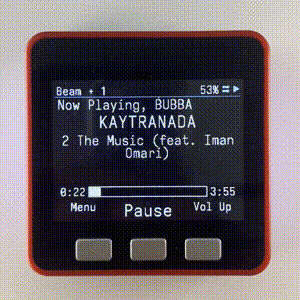
Building your own version of the handheld device is a simple as mounting a LILYGO ESP32 T-Display TTGO, an ANO Rotary Navigation Encoder from Adafruit, and a battery pack to a scrap of perfboard. We’d probably look into 3D printing a case to make it a bit less…pokey, but that’s up to you. The result actually bears quite a resemblance to Apple’s iconic media player, but without that pesky walled garden to hold you back.
As mentioned previously, [landonr] wrote the firmware with the intention of controlling a home automation system. So there’s a lot of stuff in there about turning on lights and such. But there are also functions for media playback that look very promising. Whatever software you end up running on it, one thing is for sure: running through the menus is going to feel like a dream.
We’ve covered several other home automation remotes over the years. This handsome wooden model kept things simple with just a few physical buttons, while this somewhat more whimsical approach repurposed Nintendo’s Zapper light gun.
Continue reading “Scroll Through ESPHome With IPod-style Click Wheel”
Silence Of The IPods: Reflecting On The Ever-Shifting Landscape Of Personal Media Consumption
On October 23rd of 2001, the first Apple iPod was launched. It wasn’t the first Personal Media Player (PMP), but as with many things Apple the iPod would go on to provide the benchmark for what a PMP should do, as well as what they should look like. While few today remember the PMP trailblazers like Diamond’s Rio devices, it’s hard to find anyone who doesn’t know what an ‘iPod’ is.
Even as Microsoft, Sony and others tried to steal the PMP crown, the iPod remained the irrefutable market leader, all the while gaining more and more features such as video playback and a touch display. Yet despite this success, in 2017 Apple discontinued its audio-only iPods (Nano and Shuffle), and as of May 10th, 2022, the Apple iPod Touch was discontinued. This marks the end of Apple’s foray into the PMP market, and makes one wonder whether the PMP market of the late 90s is gone, or maybe just has transformed into something else.
After all, with everyone and their pet hamster having a smartphone nowadays, what need is there for a portable device that can ‘only’ play back audio and perhaps video?
Classic IPods Are Super Upgradeable In 2022
The classic iPod was the MP3 player to beat back in the day, loaded with storage and with its characteristic click-wheel interface. [Ellie] had an iPod Video laying around, one of the more capable models that came out near the end of the product’s run, and set out upgrading it for duty in the pandemic-wracked badlands of 2022.
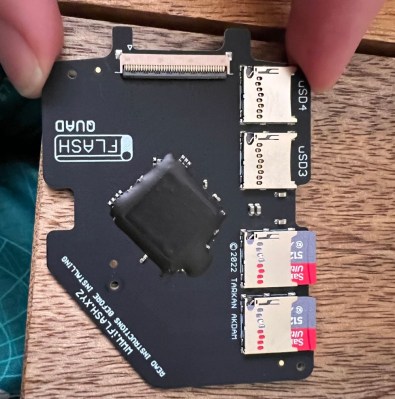 The iPod in question was a 5.5th generation model, prized for being the last to feature the Wolfson DAC with its good audio quality. [Ellie] used the ever-helpful iFixit guide to learn how to disassemble the device safely. Careful hands and a spudger are key to avoid marring the pressed-together metal case.
The iPod in question was a 5.5th generation model, prized for being the last to feature the Wolfson DAC with its good audio quality. [Ellie] used the ever-helpful iFixit guide to learn how to disassemble the device safely. Careful hands and a spudger are key to avoid marring the pressed-together metal case.
Once opened, an iFlash Quad board was installed inside that lets the iPod use up to four micro SD cards for storage instead of the original hard disk drive. With two 512 GB cards installed, [Ellie] won’t be short of storage. A new battery was then subbed in, along with a fancy clear front casing for the aesthetic charm of it all.
After the hardware modifications were complete, the iPod needed to be restored with iTunes to start working again. She then installed the open source Rockbox firmware, which opens up the capabilities of the hardware immensely. Perhaps best of all, it can play DOOM! Alternatively, you can use the clickwheel to control the volume on your MacBook if you so desire.
[Ellie’s] project goes to show that modifying an iPod these days can be a fun weekend build thanks to the great software and hardware now available. It’s wonderful to see that the platform still has such great support years after it has been discontinued. If you really want to look back though, take a gander at the early prototype of Apple’s breakout MP3 player.
IPod Mod Puts Pi Zero In New Bod
We sure love to see nicely designed products get a new lease on life. Just as the new Raspberry Pi Zero 2 was being announced, [production] was stuffing an original RPi Zero into an old iPod’s case.
[production] cites several previous, similar projects that showed how to interface with the click-wheel, a perfectly fitting color display from Waveshare, and open-source software called Rockbox to run on the pi. We all stand on the shoulders of giants.

Some nice innovations to look for are the Pi Zero’s micro-SD card and a micro-USB charging port aligned to the large slot left from the iPod’s original 40 pin connector. Having access for charging and reflashing the card without opening the case seems quite handy. There’s a nice sized battery too, though we wonder if a smaller battery and a Qi charger could fit in the same space. Check the project’s Hackaday.io for the parts list, and GitHub for the software side of things, and all the reference links you’ll need to build your own. It looks like [production] has plans to turn old iPods into Gameboy clones, you may want to check back for progress on that.
If you just want to rock like it’s 2004, there are options to just upgrade the battery and capacity but keep your vintage iPod too.
IPod HiFi Gains New High Notes
The iPod HiFi was a stereo speaker add-on produced by Apple in the mid-2000s for their iPod range, a $300-plus speaker cabinet with twin drivers per channel, an iPod dock, aux, and TOSLINK interfaces. It’s caught the eye of [Jake], in particular one posted on Reddit that had an extra set of tweeters to improve the HiFi’s lackluster treble. The question was that it might have been an Apple prototype, but lacking his own [Jake] set out to replicate it.
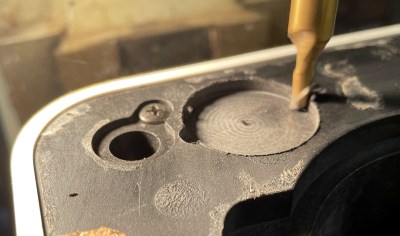 The job he’s done is to a high quality. The baffle has first 3D scanned, and then recesses were milled out of it so the tweeters could be press-fit in. He’s driving them through a simple LC crossover circuit taken from the speaker drive, and reports himself happy with the result.
The job he’s done is to a high quality. The baffle has first 3D scanned, and then recesses were milled out of it so the tweeters could be press-fit in. He’s driving them through a simple LC crossover circuit taken from the speaker drive, and reports himself happy with the result.
Unfortunately, we still don’t know whether or not the Reddit original was an Apple prototype or not. We’d be inclined to say it isn’t and praise the skills of the modder who put the tweeters in, but in case it might be we’d point to something that could deliver some clues. The iPod HiFi didn’t use a passive crossover, instead it had a DSP and active crossover, driving four class D amplifiers. If you find one with tweeters and they’re driven from the DSP through an extra pair of amplifiers then put it on eBay as a “RARE BARN FIND APPLE PROTOTYPE!” and make a fortune, otherwise simply sit back and enjoy the extra treble a previous owner gave it.
Of course, some people baulked at the price tag of the Apple speaker, and made their own.
An Epic Quest To Put More Music On An IPod Nano 3G
While many would argue that the original iPod is the most iconic entry in the long and diverse line of digital audio players that Apple released over the years, there must certainly be some consideration for the third generation (3G) iPod Nano. It’s a device that was ahead of its time in many ways, and is still perfectly usable today, although [Tucker Osman] does think it could stand to have its maximum flash storage doubled to 16 GB.
Now, we’d like to tell you that he’s already succeeded in this task. After all, in theory, it should be pretty straightforward: just remove the 8 GB flash chip and replace it with a pin-compatible 16 GB version. But of course, this is Apple we’re talking about. Nothing is ever quite that easy, and it seems that at every turn both the hardware and software in the thirteen-year-old iPod are fighting the change.
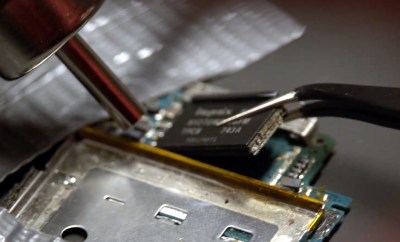 It took several attempts before the original flash chip could be swapped out, but eventually [Tucker] and his friend [Wesley] got one to survive the operation. Unfortunately, all they had to show for their effort was an unhelpful error screen.
It took several attempts before the original flash chip could be swapped out, but eventually [Tucker] and his friend [Wesley] got one to survive the operation. Unfortunately, all they had to show for their effort was an unhelpful error screen.
From here on out the assumption was that they were dealing with a software problem. Luckily the Rockbox bootloader had previously been ported to the 3G Nano, which helped get the ball rolling. The next step would be to patch the Nano’s firmware to accept the ID of the new flash chip, but after a year of work, it’s turned out to be a bit more complicated than that.
[Tucker] hasn’t given up yet, and is actively looking for anyone who’d like to help out with his quest. He’s shared some information with a few like minded individuals on Hackaday.io, and he’s also started a Discord server dedicated to Nano hacking. At this point, it sounds like he’s very close to actually reading data from the 16 GB chip, but there’s still a long way to go before the Nano’s firmware will actually play music from it.
Despite most people now using their smartphones to play music these days, we still see a lot of interest in upgrading and modernizing the iPod. From replacing their original hard drives with micro SD cards to installing a Raspberry Pi Zero in place of the original electronics, hackers are still infatuated with Apple’s legendary media player.
Continue reading “An Epic Quest To Put More Music On An IPod Nano 3G”

